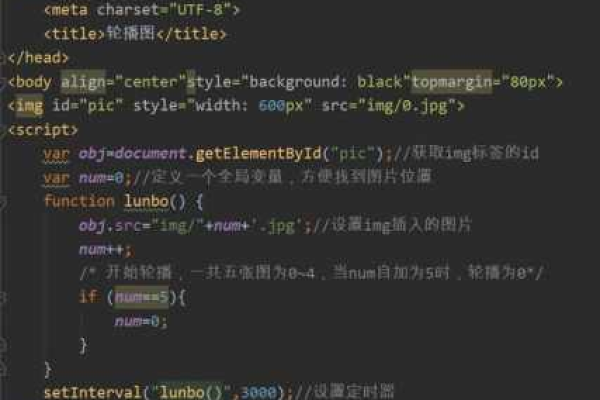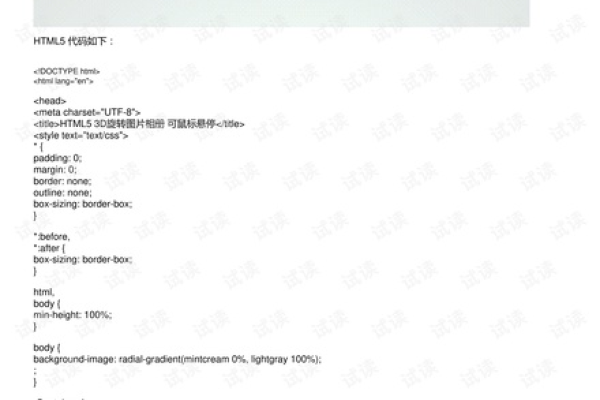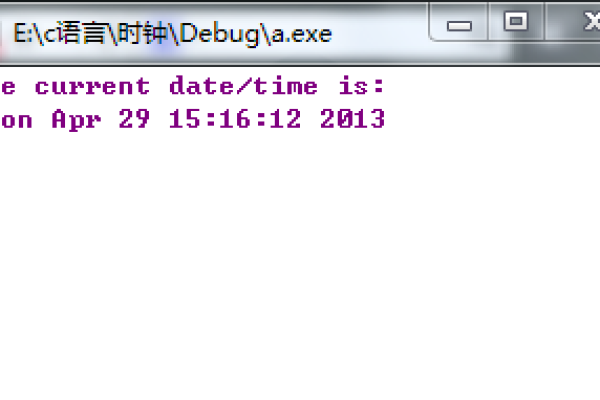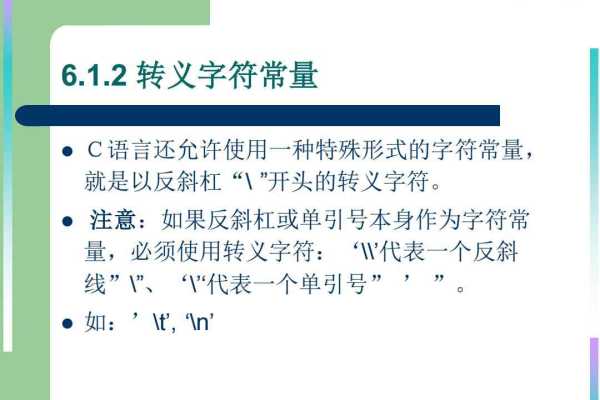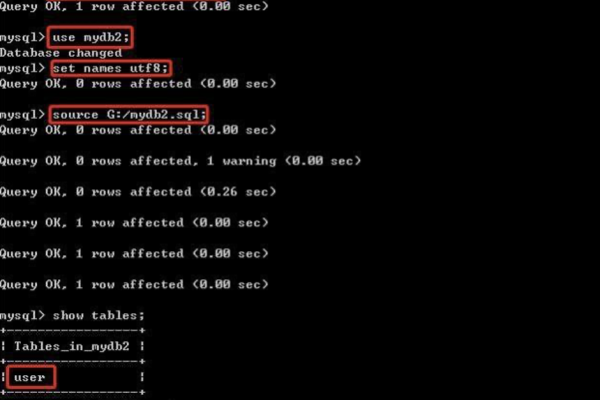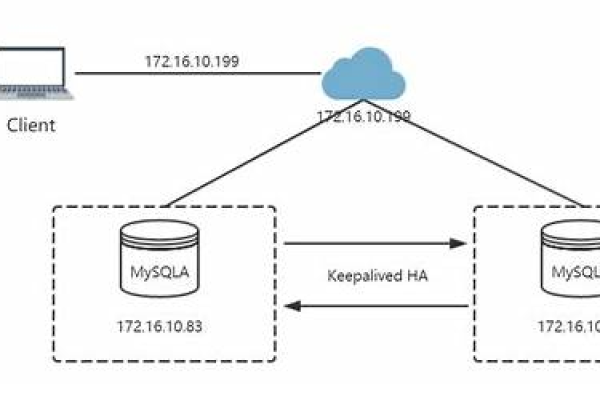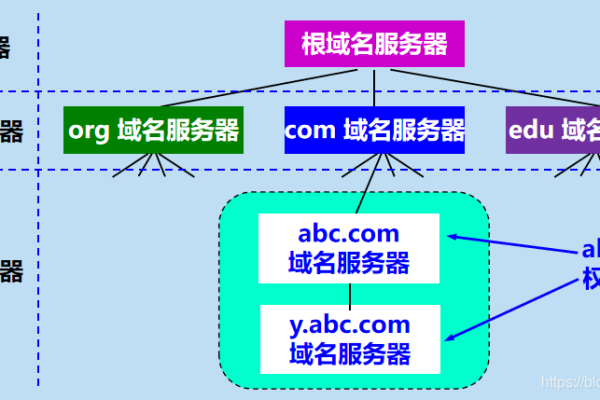c语言怎么使用时间片轮转
- 行业动态
- 2024-03-29
- 2514
时间片轮转(Round Robin Scheduling)是一种进程调度算法,它将系统中的进程分为若干个时间片,每个时间片内,进程按照固定的顺序执行,当一个进程的时间片用完时,系统会将其放入就绪队列的末尾,然后调度下一个进程执行,这种调度算法可以保证每个进程都能获得一定的CPU时间,避免了某些进程长时间得不到执行的情况。
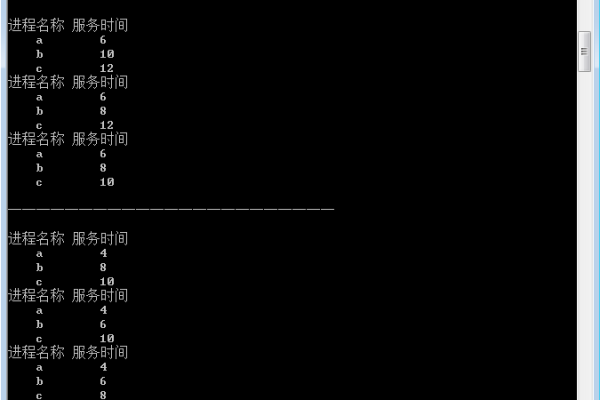
在C语言中,我们可以使用以下步骤实现时间片轮转调度算法:
1、定义进程结构体
我们需要定义一个进程结构体,用于存储进程的信息,结构体中应包含进程的名称、到达时间、执行时间、当前状态(就绪、运行、等待)等字段。
typedef struct Process {
char name[20]; // 进程名称
int arrival_time; // 到达时间
int burst_time; // 执行时间
int remaining_time; // 剩余执行时间
int state; // 进程状态(0就绪,1运行,2等待)
} Process;
2、初始化进程列表
在程序开始时,我们需要初始化进程列表,将所有进程按照到达时间排序,可以使用冒泡排序、插入排序等方法实现。
void init_process_list(Process *processes, int n) {
for (int i = 0; i < n 1; i++) {
for (int j = 0; j < n 1 i; j++) {
if (processes[j].arrival_time > processes[j + 1].arrival_time) {
Process temp = processes[j];
processes[j] = processes[j + 1];
processes[j + 1] = temp;
}
}
}
}
3、计算结束时间
为了方便计算进程的结束时间,我们可以定义一个函数calculate_end_time,输入参数为进程的到达时间和执行时间,输出参数为进程的结束时间。
int calculate_end_time(int arrival_time, int burst_time) {
return arrival_time + burst_time;
}
4、实现时间片轮转调度算法
接下来,我们需要实现时间片轮转调度算法,算法的主要逻辑如下:
初始化就绪队列和等待队列;
当就绪队列非空时,取出队首进程执行;
如果进程的剩余执行时间大于等于时间片,则执行完一个时间片后,将进程放回就绪队列队尾;否则,将进程放入完成队列;
如果等待队列非空且有进程需要等待该进程释放资源,则将等待队列中的进程移至就绪队列队首;
重复上述步骤,直到所有进程执行完毕。
void round_robin(Process *processes, int n, int time_quantum) {
// 初始化就绪队列和等待队列
Queue ready_queue = create_queue();
Queue wait_queue = create_queue();
for (int i = 0; i < n; i++) {
processes[i].remaining_time = processes[i].burst_time;
processes[i].state = 0; // 就绪状态
enqueue(ready_queue, &processes[i]);
}
int current_time = 0; // 当前时间
int completed_processes = 0; // 已完成的进程数
while (!isEmpty(ready_queue)) {
// 取出队首进程执行
Process *current_process = dequeue(ready_queue);
current_process>state = 1; // 运行状态
printf("Time: %d, Process: %s is running.
", current_time, current_process>name);
current_time++; // 更新当前时间
current_process>remaining_time = time_quantum; // 更新剩余执行时间
if (current_process>remaining_time >= 0) { // 如果剩余执行时间大于等于时间片,则继续执行下一个时间片
enqueue(ready_queue, current_process); // 将进程放回就绪队列队尾
} else { // 如果剩余执行时间为负数,则表示进程已完成执行,将其放入完成队列并更新已完成的进程数
enqueue(completed_processes, current_process); // 将进程放入完成队列
completed_processes++; // 更新已完成的进程数
}
// 如果等待队列非空且有进程需要等待该进程释放资源,则将等待队列中的进程移至就绪队列队首
if (!isEmpty(wait_queue)) { // 如果等待队列非空且有进程需要等待该进程释放资源,则将等待队列中的进程移至就绪队列队首
Process *next_process = dequeue(wait_queue); // 取出等待队列队首的进程
next_process>state = 0; // 更新进程状态为就绪状态
enqueue(ready_queue, next_process); // 将进程放入就绪队列队尾
} else { // 如果等待队列为空,则无需进行任何操作,直接进入下一次循环即可
continue;
}
}
// 打印所有已完成的进程信息及结束时间
printf("All processes have finished execution.
");
printf("Process NametEnd Time
");
for (int i = 0; i < completed_processes; i++) {
printf("%stt%d
", completed_processes[i]>name, calculate_end_time(completed_processes[i]>arrival_time, completed_processes[i]>burst_time));
}
}
5、测试代码
我们可以编写一个简单的测试代码来验证时间片轮转调度算法的正确性,假设我们有3个进程,到达时间和执行时间分别为:P1(0, 5),P2(1, 3),P3(2, 8),时间片为2,运行测试代码,观察输出结果是否符合预期。
本站发布或转载的文章及图片均来自网络,其原创性以及文中表达的观点和判断不代表本站,有问题联系侵删!
本文链接:http://www.xixizhuji.com/fuzhu/291287.html
